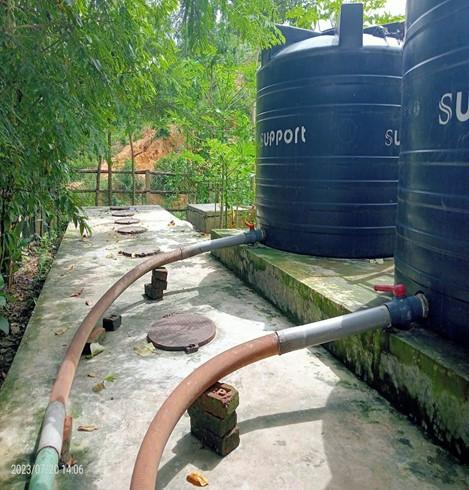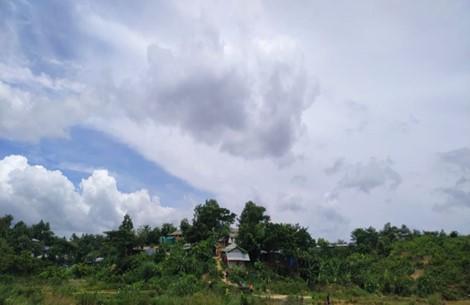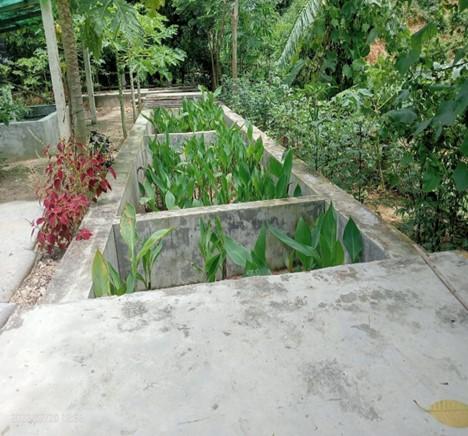Anaerobic Baffled Reactor
Description of the emergency context
Currently, there are 929,606 Rohingya refugees residing in 33 congested camps that have been officially designated by the Government of Bangladesh. This population surge occurred as a result of the extreme violence outbreak in Myanmar's Rakhine State on August 25, 2017, which led to an estimated 687,000 Rohingya refugees crossing the border into Cox's Bazar, Bangladesh. The Rohingya refugees have repeatedly sought refuge in Bangladesh due to ongoing persecution. Previous significant influxes occurred following acts of violence in Rakhine State in 1978, 1992, 2012, and once again in 2016. However, the largest and most rapid refugee influx from Myanmar into Bangladesh began in August 2017.
Operating within highly congested settings, such as the Rohingya camps, WASH actors face numerous challenges in implementing effective faecal sludge treatment processes that can efficiently remove pathogens. These challenges primarily stem from space limitations, which impose constraints on the inclusion of appropriate, safe, and sustainable processes for treatment.
Description of the treatment process
Collection Chamber:
The sludge from toilets is emptied into the collection chamber using motorized equipment such as robin pump.The inlet chamber has a capacity of 10000 liters. Sludge inlet process regulated by a gate valve.
Up-flow Filtration Chamber:
There is a concrete structure with 6 segments/chambers,where consists up-flow filtration prcoess actually. The chambers are interconnected in a baffled system, with up-flow movement trapping solid sludge at the bottom while allowing liquid to rise through the filter media to the next chamber.
Constructed Wetland:
The constructed wetland/fitration bed is a shallow trench lined with waterproof tarpaulin. It contains stone beds and kolaboti plants. With a capacity of at least 6 m3, it allows effluent to pass through. Microbial content in the effluent forms gelatin, while plant roots reduce pathogenic organisms. The effluent has a maximum retention time of 5 days .
Drying bed:
The solid sludge need to cut after 25-30 days from ABR and these are stored in drying bed for treatment purpose.We usually using hydrate lime for disinfection purpose during drying solid sludge.
Assessment & design (feasibility)
Actually, This anaerobic baffled reactor is designed by Ngo forum for public health.Now,it is operated by Caritas Bangladesh.
Construction
Operation and maintenance
Collection: The sludge from toilets is emptied into the intermediate sludge tank using motorized equipment such as a Robin pump. Workers use PPE(Personal Protective Equipment) during sludge collection. Transportation: There are using 8 nos intermediate sludge tanks(capacity-5000 liters/tank) for sludge storage from the latrine's pit and sludge transferring purposes. Emptied sludge is transferred into the Fecal sludge treatment site/Aneraobic baffled reactor through a tank-to-tank transferring process by using a pump. Inlet Chamber:
.The inlet chamber has a capacity of 10000 liters. The sludge inlet process is regulated by a gate valve.
Up-flow Filtration Chamber:
There is a concrete structure with 6 segments/chambers,where consists up-flow filtration prcoess actually. The chambers are interconnected in a baffled system, with up-flow movement trapping solid sludge at the bottom while allowing liquid to rise through the filter media to the next chamber.
Constructed Wetland:
The constructed wetland/filtration bed is a shallow trench lined with waterproof tarpaulin. It contains stone beds and kolaboti plants. With a capacity of at least 6 m3, it allows effluent to pass through. Microbial content in the effluent forms gelatin, while plant roots reduce pathogenic organisms. The effluent has a maximum retention time of 5 days.
Drying bed:
The solid sludge need to cut after 25-30 days from ABR and these are stored in drying bed for treatment purpose.We usually using hydrated lime for disinfection purpose during drying solid sludge. FSM worker's shower: There is a shower in each FSM site ,it is using for cleaning purposes regularly after finishing fecal sludge management works.
Lessons learned
1. All data must be preserved.
2. Chemical parameter should be tested and analysed.
3. ABR FSM was found to be environment friendly and there is acceptance from the community people as no odour is found in the surroundings
Strengths
1. Closely monitoring Anaerobic Baffled Reactor technology with Technical staffs. 2. All relevant records are updated.
3. Assigned skilled operators for functioning technologies.
4. Well-maintained WASH sector guidelines regarding fecal sludge management.
5. Strongly maintained personal protective equipment during fecal sludge management activities.
Weaknesses
1. Lack of wastewater testing kit. 2. Shortage of land at the Sludge treatment site.



Add new comment